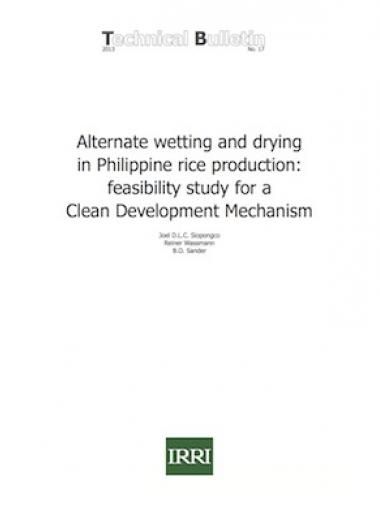Alternate wetting and drying in Philippine rice production: feasibility study for a Clean Development Mechanism

Water-saving technologies such as alternate wetting and drying (AWD) provide a way to change practices to improve the livelihoods of many rice farmers and AWD is regarded as one of the more important rice cultivation methods that can dramatically save freshwater irrigation in this century. AWD not only conserves water but also mitigates greenhouse gas emissions. The global climate influence of gases, particularly methane, and resulting reduction in methane emissions by adjusted water management practice through AWD may provide the means for rice to adapt to water scarcity and at the same time mitigate greenhouse gas emissions. With these associated benefits, AWD technology could be harnessed for a Clean Development Mechanism (CDM). This paper will discuss the merits of AWD and explore the possibility of being a CDM for areas affected by water shortage in the Angat dam and reservoir.
This document has three parts:
- A literature review of AWD and CDM
- An in-depth assessment of possible AWD dissemination
in Angat reservoir
- Appendices comprising documents that will be needed
in the process of application and registration of an envis- aged CDM project in Angat reservoir
Citation
Siopongco JDLC, Wassmann R, Sander BO. 2013. Alternate wetting and drying in Philippine rice production: feasibility study for a Clean Development Mechanism. IRRI Technical Bullettin No. 17. Los Baños, Philippines: International Rice Research Institute (IRRI).